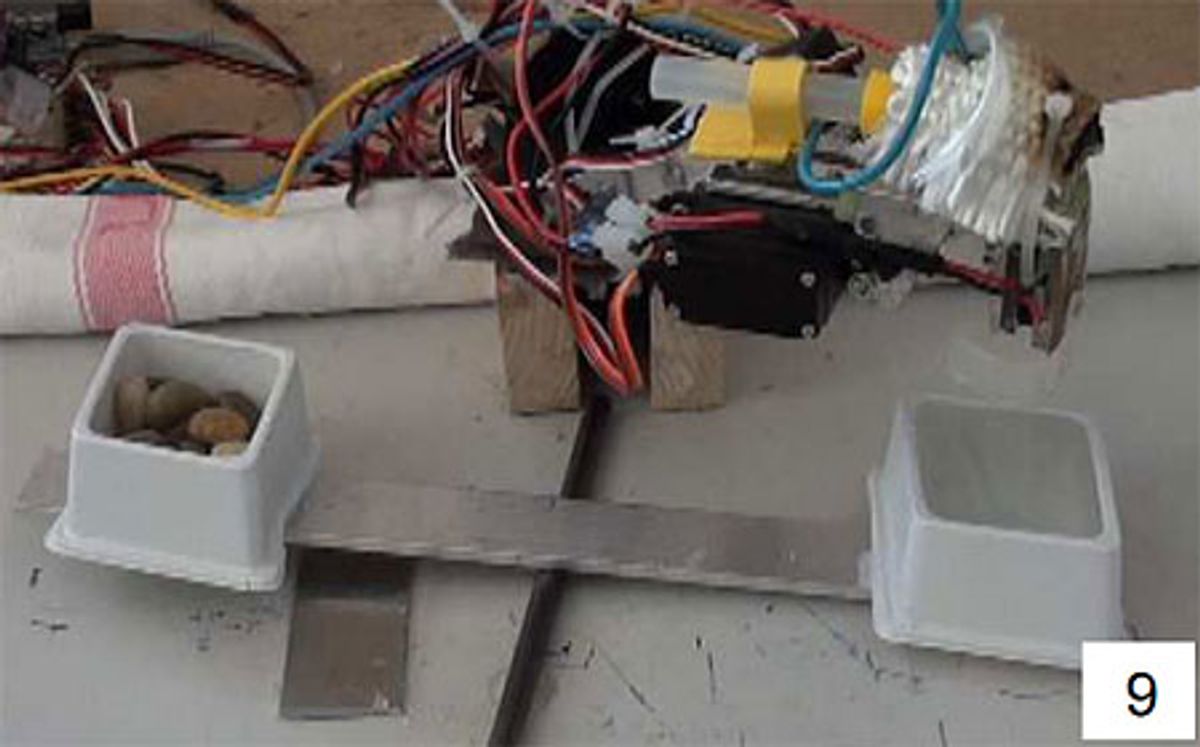Humans are generalists. We’re adaptable. If there’s a task we can’t do on our own, we find ourselves a tool to help us. Robots aren’t usually like this, because it’s very hard to design a robot that implements all the different tools that might conceivably be useful to it. Roboticists at ETH Zurich are trying to get around this problem by designing a robot with just one tool, but the tool they’ve chosen is a hot glue gun that their robot can use to manufacture any other tools that it needs to.
ETH has some experience with robots and hot glue (which they call Hot Melt Adhesive, or HMA). Last year, for example, we wrote about one of their robots that uses HMA to climb up walls, but HMA can be used as much more than just an adhesive. By building up layers of HMA material, you can construct simple shapes, and ETH has designed a robot that uses this technique to create a tool from scratch that enables it to complete a task that it wouldn’t otherwise be capable of: transporting water from one place to another.
That might have been a little hard to see, but here’s the sequence of events:
- The robot uses HMA to construct the base and sides of a cup, one layer at a time. This takes about half an hour to complete. The construction surface is aluminum, covered in a thin layer of oil to keep the HMA from sticking too much.
- While the cup cools (and solidifies), the robot builds a small bar out of HMA nearby and allows it to cool.
- When the bar has cooled sufficiently, the robot places a heating element against the bar, melting the bar onto itself. The heating element is turned off, and when the bar has cooled, the robot pulls it off of the construction surface.
- The robot adds a little dollop of HMA to the side of the cup, and then sticks the other end of the bar onto the cup and lets the HMA bond to itself.
- Finally, the robot pulls the bar and the attached cup off of the construction surface, and gets to work.
At this point, you’ve probably noticed the similarities between this process and 3D printing, which is much faster and provides a lot more detail. The reason this robot can’t just 3D print a cup is that the thermoplastic materials don’t provide any good ways of bonding objects to the robot itself, which would mean that the robot would have complex manipulators and deal with grasping, and the whole point (or part of the point) of the HMA is to make complicated things like that unnecessary.
While the actual execution of this task was performed autonomously by the robot, the planning was not, since the robot doesn’t yet have a perception process (or perception hardware, for that matter). This is something that the researchers will be working on in the future, and they fantasize about a robot that can adaptively extend its body how and when it deems fit. They also suggest that this technique could be used to create robots that can autonomously repair themselves, autonomously increase their own size and functionality, and even autonomously construct other robots out of movable HMA parts and integrated motors, all of which sounds like a surefire recipe for disaster if we’ve ever heard one.
Robotic Body Extension Based on Hot Melt Adhesives, by Luzius Brodbeck, Liyu Wang and Fumiya Iida from the Bio-Inspired Robotics Laboratory, ETH Zurich, Switzerland, was presented on Thursday at ICRA 2012 in St. Paul, Minnesota.
[ ETH Zurich Bio-Inspired Robotics ]
Evan Ackerman is a senior editor at IEEE Spectrum. Since 2007, he has written over 6,000 articles on robotics and technology. He has a degree in Martian geology and is excellent at playing bagpipes.




